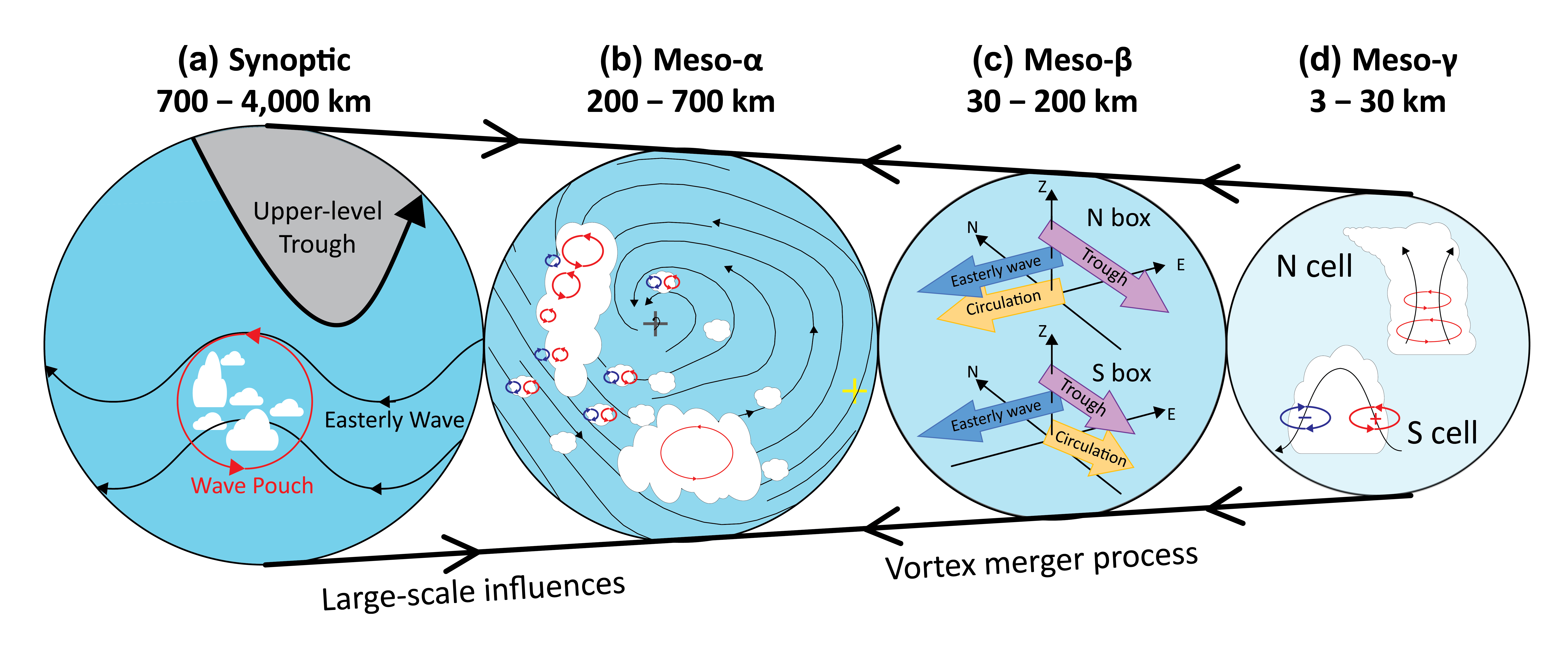Nam, C. C., M. M. Bell, : Multi-scale shear impacts during the genesis of Hagupit (2008). Monthly Weather Review, 149, 551-569 , https://doi.org/10.1175/MWR-D-20-0133.1
Key Points
Abstract
The impact of vertical wind shear (VWS) on cyclogenesis is examined from the synoptic to meso scales using airborne Doppler radar observations of pre-depression Hagupit during Tropical Cyclone Structure 2008 (TCS08) / THORPEX Pacific Area Regional Campaign (T-PARC) field campaigns. The high temporal and spatial resolution observations reveal complex localized convective and vortical characteristics of a pre-depression in a sheared environment. Pre-depression Hagupit interacted with an upper-tropospheric trough during the observation period. The strong deep-layer VWS (> 20 m s -1) had a negative impact on the development through misalignment of the low and mid-level circulations and dry air intrusion. However, the low-level circulation persisted and the system ultimately formed into a tropical cyclone after it left the high-shear zone. Here we propose that a key process that enabled the predepression to survive through the upper-tropospheric trough interaction was persistent vorticity amplification on the meso-gamma scale that was aggregated on the mesoalpha scale within the pouch. Multi-Doppler wind analysis indicates that cumulus congestus tilted the low-level horizontal vorticity into the vertical in the early stage of convective life-cycle, followed by stretching from maturing deep convection. Variations in low-level VWS on the meso-beta scale affect convective organization and horizontal vorticity generation. The results provide new insights into multi-scale processes during TC genesis and the interactions of a pre-depression with VWS at various spatial scales.
Key Figure
FIG. 14. Schematic of the multi-scale interactions in Hagupit’s cyclogenesis. a) Synoptic scale active features are the upper-level trough and easterly wave which carries the marsupial wave pouch, denoted as red circulation. b) In the meso-alpha scale wave pouch, the low-level cyclonic streamlines are shown with circulation center marked with black cross and mid-level center as yellow cross. Overlain on the clouds to the southwest of the low-level center is vorticity (positive: red, negative: blue), illustrating vorticity dipoles from tilting, enhanced vorticity from stretching, and a mid-level MCV over the stratiform area. c) In the meso-beta scale, the local wind shear profile that influences the convective organization is composed of winds from cyclonic circulation inside pouch, easterly wave propagation, and the trough. d) Meso-gamma scale convective cells produce vorticity that serve as building blocks for the wave pouch intensification through tilting of horizontal vorticity associated with low- level wind shear (S cell) and stretching of the local vertical vorticity (N cell).
Acknowledgments
Research was supported by National Science Foundation award AGS-1701225 and Office of Naval Research award N000141613033.
